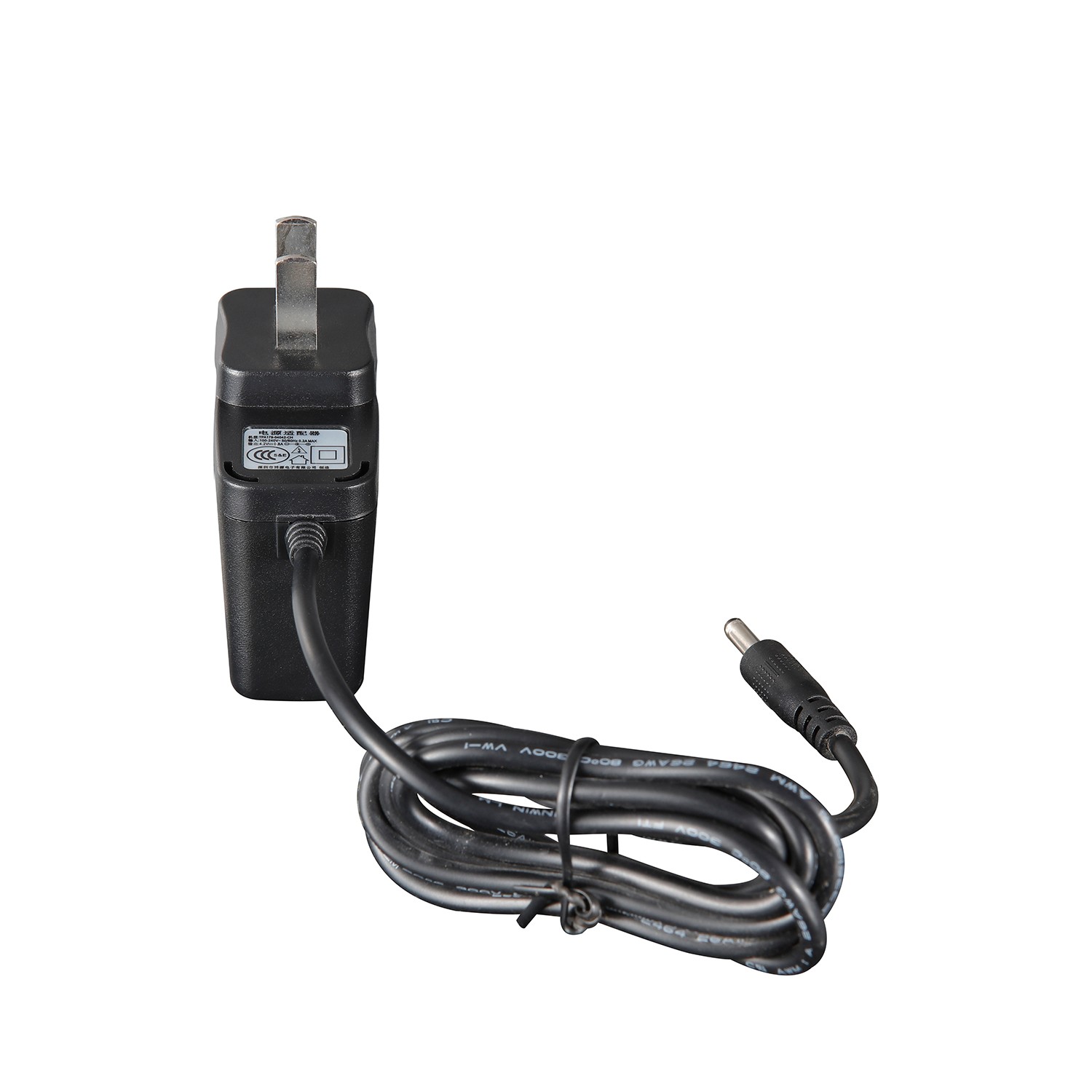source:Industry News Popular:adapter release time:2021-12-15 10:57:04 Article author:sznbone

For SLA batteries that are used in parallel online, the charging method is recommended to use 2.27V/cell (corresponding to 12V battery is 13.7V) constant voltage charging, this solution will not overcharge the battery, but also help stabilize the device voltage. For frequent offline When charging and discharging SLA batteries, you should use 0.2C constant current, then 2.45V/unit constant voltage, and immediately enter the 2.27V/unit constant voltage "three-stage" charging method after the battery is charged. The entire charging time is about 8 to 10 hours.
NICD batteries allow overcharging with a certain current, so choosing a simple constant current source charger with 0.1C current is economical.
NIMH batteries are more sensitive to overcharging, that is, when using a current of 0.1C, if you charge for more than 14 hours or continue to charge the charged battery for a few more hours, the battery life will be greatly damaged. The battery should be fully charged. It is very important to turn off the current in time or reduce the charging current to below 0.02C, even for the 0.1C night slow-charging NIMH charger.
There have been many successful cases of smart fast chargers with a maximum charging current of about 2C. Such chargers generally have to monitor the battery voltage, temperature and other parameters at all times during the charging process, and automatically reduce the charging current when the battery is about to be fully charged. This can minimize the risk of over-temperature and over-voltage caused by battery overcharging.
The charging characteristics of NICD and NIMH batteries are very similar, except that NIMH batteries generate more heat and have less obvious peak voltages during the charging process. Both types of batteries use one of the following conditions as the fast charge termination condition during fast charging: including voltage rise slope (dV/dt), negative voltage rise (-dV) and battery temperature rise slope (dT/dt) . There are also three conditions that are set to operate under abnormal protection conditions: the highest battery temperature, the highest battery voltage, and the built-in timer of the charger. To realize these monitoring and intelligent switching actions, it will definitely increase the cost of the charger, but without these measures, the battery will face safety hazards such as reduced capacity, reduced cycle life, and even leakage and explosion. .
The charging methods of LI-ION and SLA batteries are relatively similar. Both require constant current and then constant voltage. The difference is that lithium-ion batteries require higher voltage accuracy (<1%) in the constant voltage stage of charging. Since the safety of lithium batteries is a fatal hidden danger, special care must be taken in the control and protection of the end of charge. For different applications, lithium-ion battery packs will have built-in corresponding charging and discharging protection circuits, so as to more safely protect the battery from happening.
Read recommendations:
Power adapter PCB layout and wiring design.india plug charger
The latest article
S series S1000 energy storage mobile power supply
2021-03-18S series S900 energy storage mobile power supply
2021-03-18New ABS Fire Shell Gigabit ESD Protection POE Powered Adapter Power Supply 90W POE Injector
2021-03-18165W Open Frame Power Supply
2021-03-18130W Open Frame Power Supply
2021-03-1880W Open Frame Power Supply
2021-03-1872W Open Frame Power Supply
2021-03-1872W Open Frame Power Supply
2021-03-1836W Open Frame Power Supply
2021-03-187W Open Frame Power Supply
2021-03-18Amplifier Power Supply
2021-03-10Amplifier Power Supply
2021-03-1027W Single Amplifier Power Supply
2021-03-10Amplifier Power Supply
2021-03-1030W Amplifier Power Supply
2021-03-10144W Amplifier Power Supply
2021-03-1024W Adapter
2021-03-1018W Adapter
2021-03-1018W Adapter
2021-03-1018W Adapter
2021-03-10IEEE 802.3at 30W POE Power Supply
2021-03-1010W Open Frame Power Supply
2021-03-10450W Open Frame Power Supply
2021-03-09140W 55V 2.55A POE Power supply
2021-02-27The latest article
Topow Electronics will attend to the Eletrolar Show, June 23th-26th 2025 in Brazil
2025-06-19Topow Electronics will attend to the Eletrolar Show, June 23th-26th 2025 in Brazil.
2025-06-19Topow will attend to Global Sources Consumer Electronics Show in April 11th-14th
2025-04-092003-2004
2025-03-252004-2006
2025-03-252006-2008
2025-03-252009-2011
2025-03-252012-2014
2025-03-252014-2017
2025-03-252018-2022
2025-03-252022-2024
2025-03-252024-2025
2025-03-25What are the types of mobile phone chargers and their functions?
2022-05-21Advantages of switching power adapters
2022-05-21Five core functions that the power adapter can achieve.adapter manufacture
2022-05-20Analysis of the importance of power adapters for notebooks.adapter Processor
2022-05-20Details of switching power supply in maintenance
2022-05-19Understand the precautions of the power adapter and be an expert in electricity safety
2022-05-19This is how the EMC interference of the switching power supply is generated.adapter wholesaler
2022-05-18The relationship between the nominal voltage and current of the power adapter.power adapter price
2022-05-18Five basic functions of notebook power adapters.adapter wholesaler
2022-05-17Lightning surge immunity test method.power adapter price
2022-05-17Switching power supply ripple source and control
2022-05-16Level 6 energy efficiency standard power adapter T series
2022-05-16Children sleeping with pacifiers are prone to tooth decay
2022-05-16Six methods to deal with the heating problem of switching power supply transformer
2022-05-14The principle of flyback switching power supply
2022-05-14Types of thermal protection for power adapters.adjustable power adapter
2022-05-13Summary of common faults of LED switching power supply
2022-05-13The power transistor should be used like this in the power adapter
2022-05-12